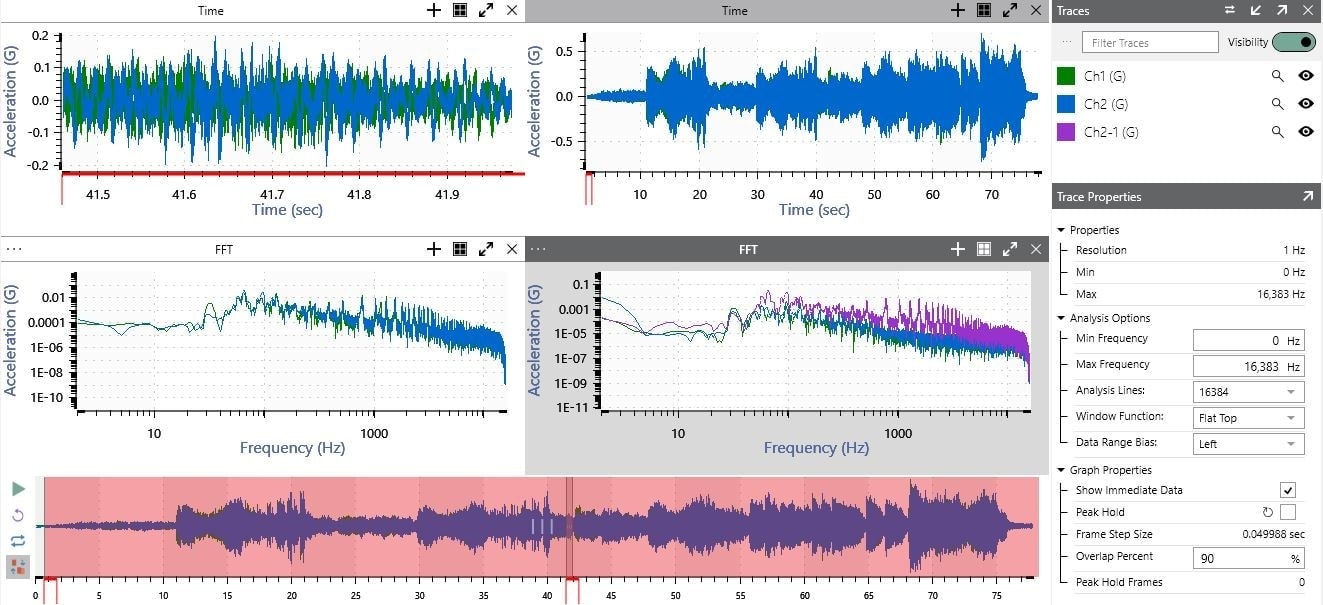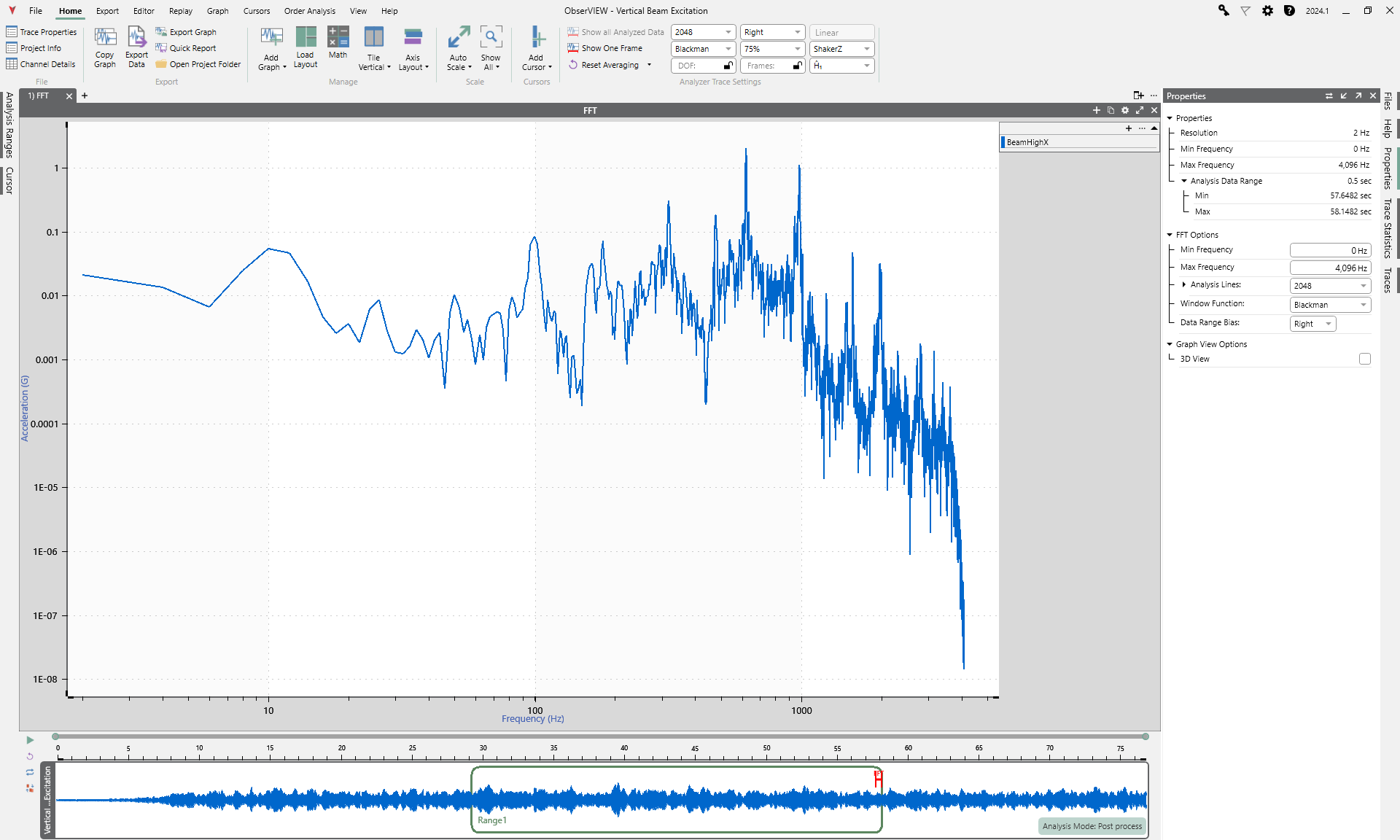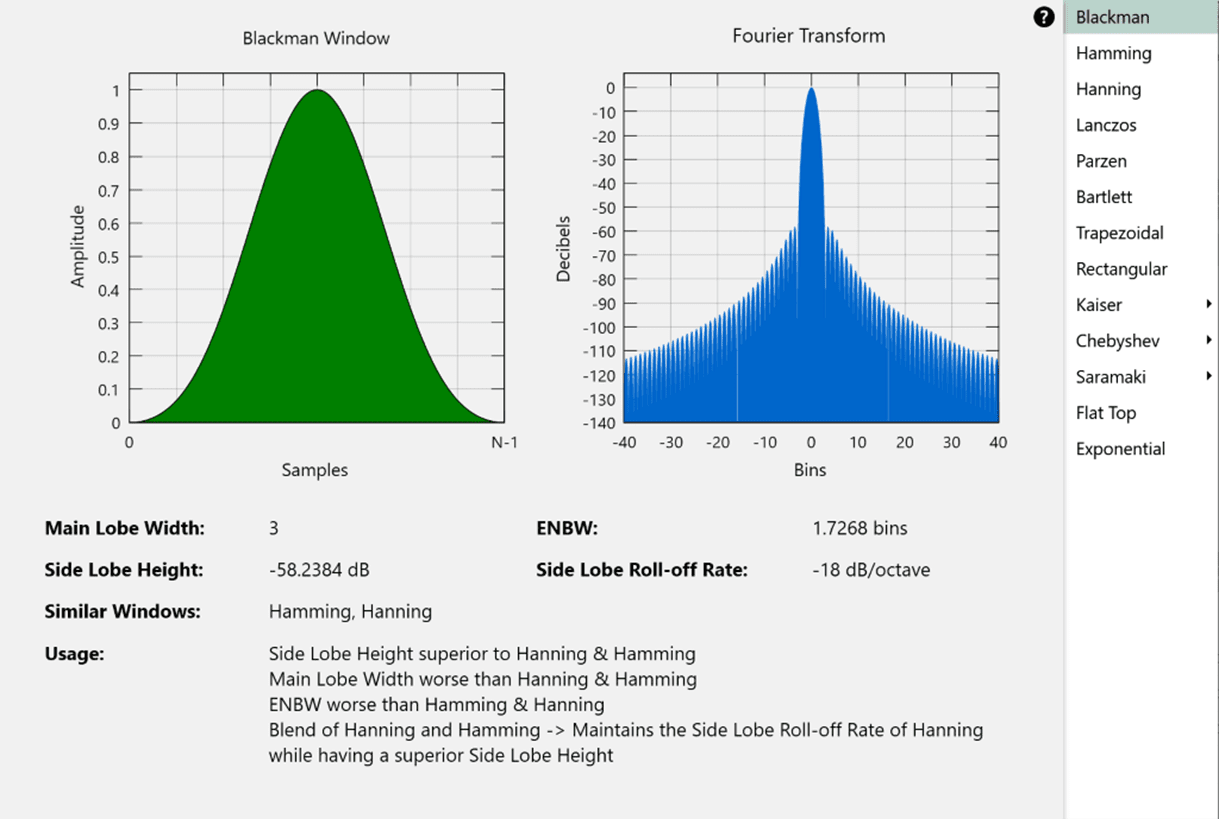FFT Analysis
Transform time-domain data into the frequency domain
Perform efficient data analysis on live data or an imported file with the fast Fourier transform (FFT). View changes in frequency and amplitude in a waveform, highlight harmonic excitation in a broad frequency range, and more.
Download Demo All Software Features


